- Home
- Orhan Pamuk
The Black Book Page 9
The Black Book Read online
Page 9
Saim used to show up at all the political meetings, the “forums,” running from university to university and canteen to canteen, listening to everyone and his brother, in pursuit of “all opinions, all convictions,” but hesitant to ask too many questions; he’d get hold of all kinds of leftist circulars (Pardon me, but do you happen to have the report handed out by the “eliminators” at the School of Technology yesterday?), including all the white papers, the propaganda brochures, the handbills, and he’d read like mad. When he no longer had the time to read everything, but still couldn’t settle on a “political line,” he must have started accumulating what he couldn’t read. Later on, when reading and coming to a resolution ceased to be big concerns for him, his goal was to build a dam in order to prevent this “river of documents,” which had gathered affluence, from flowing along uselessly (the metaphor originated with Saim who was a construction engineer), and it was to this end that Saim had generously dedicated the rest of his life.
With the TV program over, the set turned off, and polite conversation got through, the husband and wife cast quizzical glances at Galip in the ensuing silence, requiring that he tell his story immediately: His defendant was a student who’d been accused of a political crime he hadn’t committed. No, it wasn’t like there was no dead party. It followed a bungled bank robbery planned by three bungling kids, and as they tried to make it to the getaway car which was a stolen taxi, one of them had accidentally bumped into a little old lady, bumping her off. Seems the poor dear lady fell and hit her head on the sidewalk and died on the spot (“Wouldn’t you know it!” said Saim’s wife). The only one they caught on the scene, carrying a gun, was a quiet boy who came from a “good family.” Naturally, he tried to withhold the names of comrades whom he admired too much and, what’s more amazing, he was successful in keeping his mouth shut despite the torture he underwent; but the bad news, according to Galip’s subsequent investigations, was that he ended up quietly assuming the responsibility for the little old lady’s death. The real perpetrator, a student of archaeology named Mehmet Yilmaz, was gunned down three weeks later by unidentified persons as he wrote ciphered slogans on a factory wall in a new squatters’ district behind Umraniye. Under the circumstances, it could be expected that the kid from the good family would divulge the name of the real perpetrator, but not only did the police not believe that the dead Mehmet Yilmaz was the real Mehmet Yilmaz but the leaders of the faction who were behind the bank robbery, taking an unexpected stance, claimed that Mehmet Yilmaz was still in their ranks and, what’s more, that he continued to write articles for their publication with all his former resolve.
Now that he’d taken on the case, more for the sake of the father, who was a wealthy, well-meaning man, than for the boy in the big house, Galip wanted: 1) to make sure that the “Mehmet Yilmaz” was not the real Mehmet Yilmaz by going through his articles; 2) to discover who in fact was writing the articles under the guise of the dead Mehmet Yilmaz by checking out articles written under other assumed names; 3) as Saim and his wife must have already surmised, seeing how this odd happenstance had been arranged by the cadre in which Rüya’s ex-husband once figured, he wanted to glance through the activities of this political splinter group over the last six months; and 4) he was determined to make a serious inquiry into ghostwriters who assumed the identity of dead writers, and into the mystery of missing persons in general.
They embarked immediately upon the research, which now excited Saim. In the first couple of hours, while they drank tea and gobbled up slices of cake served by the wife whose name Galip finally recalled (Rukiyé), they looked through the publications only for the names and the assumed names of the contributors. Then they augmented the list with the pen names of those who made confessions, those who were dead, and those who worked for the periodicals. Soon their heads were reeling with the enigma of a semisecret world which was impermanent, built on death notices, threats, confessions, bombs, errors of typesetting, poems, and slogans.
They came across assumed names that were no secret, names derived from these assumed names, names that were portions of the derivative names. They deciphered acrostics, letter codes that were less than perfect, and semitransparent anagrams which might have been intentional or entirely accidental. Rukiyé sat at one end of the table where Saim and Galip were sitting. The atmosphere in the room had assumed the same impatient but somewhat customary sadness of people listening to the radio on New Year’s Eve while playing bingo or the Paper Horse Race, rather than the effort to clear a young man falsely accused of murder, or to track down a woman who was missing. Between the open curtains, one could see the snow flurries outside.
With the same satisfaction as that of a patient teacher who waits to witness the successful maturation of a bright new student he’s discovered, they delighted in tracking down the assumed names’ adventures, their zigzags through the magazines, their ups and their downs. At times when they saw the photograph of one among them who had been arrested, put to torture, given a sentence, or had disappeared, they fell silent with a sorrow that curtailed their excitement; then, stumbling across some new wordplay, a new coincidence, or something erratic, they returned once more to the life of letters.
According to Saim, never mind the imaginary nature of the names and the heroes that they came across in the publications, even the demonstrations, the meetings, the secret councils, the congresses of underground parties, and the bank robberies organized by these names had never taken place. As an extreme example of what he was saying, he pulled out the account of a popular uprising some twenty years ago in the town of Little Çeruh, situated between Erzincan and Kemah in Eastern Anatolia: during the insurrection, for which one of the publications had provided a definite date, a provisional government had been established, a pink stamp bearing a dove had been issued, the provincial governor had been brained by a falling vase, a daily paper composed entirely of poems had been published, opticians and pharmacies had handed out free eyeglasses to cross-eyed persons, firewood was obtained for the stove at the elementary school, and, just as the bridge to connect the town to civilization was about to be built, Atatürkist forces of government arrived, taking the matter in hand, and, before the cows had a chance to finish munching up the stinky prayer rugs that covered the dirt floor in the mosque, they’d strung up the rebels on the oak tree in the middle of the town square. In reality—as Saim pointed out the enigma in the logograms and the maps—on top of there being no town called Çeruh, Little or Otherwise, the names of those who took part in the insurrection that arose like the legendary bird were all false. The false names got buried under poetry with rhymes or word repetitions, but there was one instance when they came upon a clue concerning Mehmet Yilmaz (the reference was to a murder committed in Umraniye during the same period that Galip had spoken about). They pored over the accounts and the reports, which read like domestic films that keep breaking and getting spliced, but they could never find the end to the story in the subsequent issues of the journal.
At one point Galip rose from the table and called home, telling Rüya tenderly that he was going to work late with Saim and not to wait up but to go to sleep. The phone was at the far end of the room. Saim and his wife sent Rüya their regards: Rüya responded in kind, naturally.
While they were deep into the game of discovering the assumed names, deciphering them, and making logogriphs out of them, Saim’s wife went to bed, leaving the two men alone in the room, every inch of which was covered under piles of papers, periodicals, newspapers, and reports. It was way past midnight; Istanbul was under the bewitching silence of snow. While Galip indulged himself in the typesetting and spelling errors in the fascinating collection (“Too incomplete, too inadequate!” Saim said with his usual modesty) which was made up largely of sheets that had been faintly duplicated by the same mimeograph machines and dispersed in university canteens that smell of cigarette smoke, during strikes held in tents on rainy days and in remote train stations, Saim brought out from another room
a tract which he called “very rare” and showed it to him with the pride of a collector: Anti Ibn Zerhani or The Sufi Traveler Who Has His Feet on the Ground.
Carefully, Galip began to turn the pages of the bound book, which was nonetheless in typescript. “A fellow who lives in the province of Kayseri, in a town that doesn’t show up on a medium-size map of Turkey,” Saim explained. “He received training in religion and Sufi mysticism in his childhood from his dad who was the master of a small tekke. Years later, as he read the thirteenth-century Arab mystic philosopher Ibn Zerhani’s book called The Inner Meaning of the Lost Mystery, he wrote in the margins, emulating Lenin reading Hegel, a running ‘materialist’ commentary. He then made a fair copy of these notes, which he expanded with long and unnecessary parenthetical substantiations. As if his notes were the work of someone else whose notions were totally incomprehensible and esoteric, he next wrote a long explication, a kind of treatise. Then he put these together as if both were the work of other people, typed it all up including a ‘publisher’s foreword,’ which he also wrote himself. In the first thirty pages, he added the tale of his own religious and subsequent revolutionary life history. What was interesting in these tales was the account of how the author discovered, as he strolled in the town cemetery one afternoon, the strong connection between Sufi mysticism, which the West terms ‘pantheism,’ and the philosophical ‘thingism’ as propounded by the author in reaction to his father, a Sufi master. When he saw in the tall cypress trees the same crow he’d seen years ago in this very cemetery where the sheep graze and where even the ghosts are asleep—you know that the Turkish crow has a life span of two hundred years, don’t you?—he understood that the winged, shameless flying beast called ‘higher thought’ retained always, always, the same head and feet and especially the same body and wings. He drew the picture of the same crow, inscribed on the bound cover, himself. This book proves that any Turk who desires immortality has to be his own Boswell to his own Johnson, both his own Goethe and his own Eckermann. Six copies were typed in all. I bet there isn’t one in the archives of the National Bureau of Investigation.”
It was as if the ghost of a third person bonded the two men in the room to the author of the book with the crow on the cover, to the imaginative power of the sad, insignificant, isolated life that was spent going back and forth between a house in a provincial town and the small hardware store he inherited from his father. Galip felt like saying: “There is only one story told in all that’s been written, in all those letters, all the words, all the hopes of salvation and the recollections of torture and disgrace, penned with the joy and sorrow of all those hopes and the recollections, a single story.” It was as if Saim had captured the story somewhere in his collection of white papers, periodicals, and newsprint which he’d pulled together with the patience of a fisherman who’s thrown his net into the ocean for years. And he knew he got it too. But besides being unable to seize the naked story hidden in all the material that he’d stacked up and put into order, he’d lost the word that would unlock it.
When they came across Mehmet Yilmaz’s name in a periodical published four years ago, Galip began saying that it was just a coincidence and that he ought to go home, but Saim stopped him declaring that nothing was coincidental in his periodicals—he spoke of them as “my periodicals” now. Making a superhuman effort for the next two hours, leaping from one periodical into another, rolling his eyes like projectors, Galip discovered Mehmet Yilmaz had been converted to Ahmet Yilmaz; in a periodical which had a well on the cover and which roiled with chickens and peasants, Ahmet Yilmaz had now turned into a Mete Çakmaz; it was not too difficult for Saim to put together that Metin Çakmaz and Ferit Çakmaz were also the same individual; in the meantime, the pen name had given up on theoretical articles and gone for writing lyrics for songs that are sung accompanied by stringed instruments and cigarette smoke at memorials held in wedding halls. But he hadn’t stayed with that too long, either; for a while, he’d turned into a pen name which was convinced that everybody except itself was part of the police, then into an ambitious and highstrung math-oriented economist who deciphered the perversities of British academicians. But he wasn’t someone who could long tolerate dark and dire clichés. Saim found his hero in an issue of another periodical collection for which he’d tiptoed into the bedroom, published some three years ago, as if he’d planted him there himself: the guy’s name was now Ali Celan, who expounded on the details of how life would be lived in a classless society in a beautiful future: cobbled streets would remain cobbled and not covered under asphalt; detective novels which were a waste of time would be banned as well as mystifying newspaper columns; the habit of having barbers come home to give haircuts would be broken. And when Galip read that the education of children, in order to prevent them from getting brainwashed by their parents’ stupid prejudices, would be delegated to their grandparents who lived upstairs, he had no doubt left as to the identity of the pen name, and he came to the painful realization that Rüya had shared her childhood recollections with her ex-husband. Surprisingly enough, it was announced in the next issue that the same pen name belonged to a professor of mathematics who was a member of the Academy of Albanian Studies. There, below the professor’s life story, not hidden under some assumed moniker, stood Rüya’s ex-husband’s real name, silent and motionless like a bewildered bug caught under the kitchen light turned on suddenly.
“Nothing can be as astounding as life,” Saim said exultantly, “except writing.”
He tiptoed into the bedroom once more and came out with two cardboard Sana margarine cases piled up with periodicals. “These are the periodicals of a splinter group that has some connection to Albania. I’m going to relate to you a strange mystery I’ve managed to solve only because I’ve devoted to it so many years of my life. I have a feeling it’s related to the object you’re looking for.”
He brewed a fresh pot of tea, took some periodicals out of the boxes and some books off the shelves that he deemed necessary for the telling of his story, and placed them on the table.
“It was six years ago,” he began, “a Saturday afternoon. I was looking through the magazines put out by fellow travelers of the Albanian Labor Party and its leader Enver Hoxha (and there were three publications back then which were all sworn enemies of each other); as I was leafing through the last issue of one called The Labor of the People to see if there was anything of interest, my eye caught a photograph and an article: it was about a ceremony in honor of new recruits inducted into the faction. What caught my attention was not the disclosure that the recruits were inducted into a Marxist organization with songs and poems in a country where all Communist activity is illegal, no; I knew that, in spite of the danger, all the small leftist splinter groups published similar articles in each issue in order to stay alive, to make it known that their numbers were growing. What did catch my attention was the caption that mentioned pointedly the ‘twelve’ columns in the black-and-white photo which showed a crowd smoking passionately as if it were performing a sacred duty, the posters of Enver Hoxha and Mao, and the reciters of poetry. Even more strange, the assumed names of the new recruits mentioned in the interview were always chosen from the names of the Alawite order, names like Hasan, Hüseyin, Ali and, as I was to discover later, the names of the Bektaşi sheiks, spiritual leaders. Had I not known that Bektaşi Sufi orders had been big in Albania at one time, perhaps I would never have suspected anything about this incredible mystery, but I went at the events and the articles hammer and tongs. For four whole years I read books constantly on the Bektaşi order, the Janissary army, Hurufism, and Albanian Communism, and I unraveled a hundred-and-fifty-year-old conspiracy.”
“You know all this anyway,” Saim said but went on to recite the Bektaşi history of seven hundred years, beginning with Hacı Bektaş Veli. He gave an account of how the order had Alawite, Sufi, and shamanistic origins, how it was related to the periods of inception and rise of the Ottoman Empire and the tradition of revolution an
d rebellion in the Janissary army, the center of which was rooted in the Bektaşi order. If you considered, after all, that each Janissary soldier was a Bektaşi, then you saw instantly its mystery stamped on the history of Istanbul. The first time the Bektaşis got the boot out of Istanbul, it was due to the Janissaries: while the barracks got blitzed in 1826 under the orders of Mahmut the Second, seeing how the rebellious army was unwilling to accept his program of Westernization, the tekkes which maintained the spiritual health of the Janissaries were shut down and the Bektaşi dervishes kicked out of town.
Twenty years after going underground, the Bektaşis returned to Istanbul, but this time under the guise of the Nakşbendi order. Until Atatürk banned all the activities of the orders seventy years later, the Bektaşis presented themselves to the world as Nakşis, but they lived among themselves as Bektaşis, burying their secrets even deeper.
Galip studied an engraving from an English travel book that represented a Bektaşi ritual which probably reflected the fantasy in the mind of the artist-traveler rather than reality. He counted the twelve columns in the engraving one by one.
“The third time the Bektaşis manifested themselves,” Saim said, “it was fifty years after the Republic, not under the Nakşbendi order this time but wearing a Marxist-Leninist guise…” Following a silence, he gave an excited recital, producing by way of illustration articles, photos, engravings he’d cut out of journals, books, brochures. All that was performed, written, and experienced in the Bektaşi order corresponded exactly to all that went on in the political factions: the rituals of initiation; the periods of severe trials and self-denial before the initiation; the pain endured by the youthful aspirants during these periods; the veneration for the fallen, the sainted, and the dead among the order’s or the faction’s past members, and the rites of paying homage to them; the sacred meaning assigned to the word “road”; the repetition of words and expressions for the sake of the spirit of oneness and community; the litanies; the fact that adepts who travel the same road recognize each other by their beards, mustaches, even the expressions in their eyes; the meter and the rhyme scheme in the poems recited and the songs played during their ceremonies; etc., etc. “Ostensibly, unless all this is only coincidence,” said Saim, “unless God is playing a cruel epistolic joke on me, then I’d have to be blind not to see that the logogriphs and the anagrams the Bektaşis took over from the Hurufis are, without any doubt, being reiterated in the leftist publications.” In the silence which was unbroken except for the whistles of the night watchmen in distant quarters, Saim slowly began to recite for Galip the word games he’d figured out, lining them up with their secondary meanings, as if he were repeating his prayers.

 Snow
Snow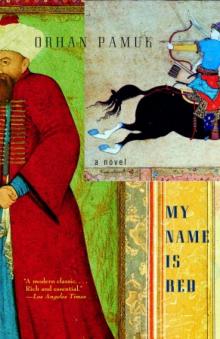 My Name is Red
My Name is Red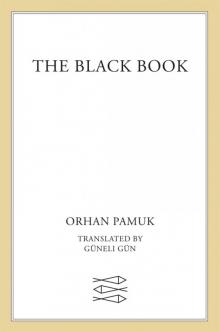 The Black Book
The Black Book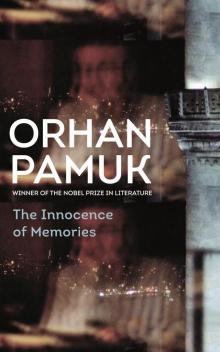 The Innocence of Memories
The Innocence of Memories The White Castle
The White Castle Other Colors
Other Colors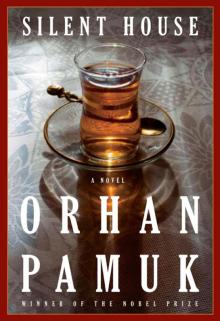 Silent House
Silent House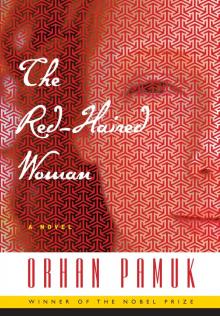 The Red-Haired Woman
The Red-Haired Woman The Museum of Innocence
The Museum of Innocence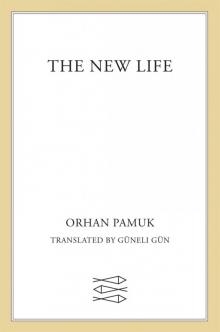 The New Life
The New Life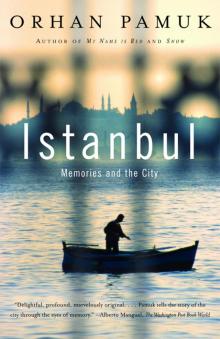 Istanbul
Istanbul